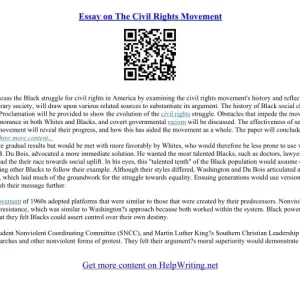
Gone With the Wind & Beyond: How Southern Literature Evolved
Margaret Mitchell’s Gone With the Wind, published in 1936, cast a long shadow over Southern literature. More than just a sweeping historical romance, it became a cultural touchstone, simultaneously captivating and infuriating readers with its portrayal of the antebellum South, the Civil War, and Reconstruction. Its immense popularity, however, also sparked a crucial conversation: what constituted authentic Southern storytelling, and how could writers move beyond its romanticized, often problematic, depiction of the region’s past?
The Shadow of Tara: Confronting the Legacy of *Gone With the Wind*
Gone With the Wind‘s enduring legacy is undeniable. Its epic scale, memorable characters (Scarlett O’Hara, Rhett Butler), and dramatic narrative captivated a nation. Yet, its romanticized view of slavery and its largely sympathetic portrayal of Confederate characters sparked – and continues to spark – significant criticism. The novel’s impact forced subsequent generations of Southern writers to grapple with its complex legacy, prompting a critical examination of race, class, and the lingering effects of slavery on Southern identity.
The post-Gone With the Wind era witnessed a gradual shift. While some writers continued to explore themes of the Old South, they did so with a newfound awareness of historical accuracy and a willingness to confront the uncomfortable truths of the past. This evolution wasn’t linear; it was a complex, often contradictory process, marked by both progress and setbacks.
A New South Emerges: Challenging Narratives and Finding New Voices
| Era | Key Characteristics | Representative Authors |
|---|---|---|
| Post-WWII Southern Renaissance | Focus on the psychological impact of the past, exploring themes of alienation and moral ambiguity. | Flannery O’Connor, William Faulkner |
| Civil Rights Era and Beyond | Increased representation of Black voices, challenging dominant narratives and exploring the realities of racial injustice. | James Baldwin, Alice Walker |
| Contemporary Southern Literature | Diverse perspectives, grappling with issues of identity, class, gender, and the changing South. | Jesmyn Ward, Kiese Laymon |
The rise of the Southern Renaissance in the post-World War II era, exemplified by authors like Flannery O’Connor and William Faulkner, marked a turning point. While still engaging with Southern landscapes and characters, these writers delved into the psychological complexities of their subjects, revealing the moral ambiguities and internal conflicts shaped by the region’s history. O’Connor’s grotesque realism and Faulkner’s exploration of time and memory offered profound, albeit unsettling, portrayals of the human condition in the South.
The Civil Rights Movement and its aftermath fundamentally altered the landscape of Southern literature. Black writers, previously marginalized, found powerful platforms to tell their stories, challenging the dominant narratives and offering unflinching accounts of the realities of racial injustice and segregation. James Baldwin’s searing prose and Alice Walker’s exploration of Black womanhood redefined what Southern literature could be, forcing a reckoning with the past and its ongoing implications.
The Evolving South: Contemporary Voices and Themes
Contemporary Southern literature reflects the ongoing evolution of the region. It is a vibrant tapestry woven from diverse perspectives, embracing a multitude of experiences and challenging simplistic notions of Southern identity. Writers like Jesmyn Ward, with her unflinching depictions of poverty and resilience in the aftermath of Hurricane Katrina, and Kiese Laymon, whose work explores themes of masculinity, race, and family in the Mississippi Delta, exemplify this new wave of Southern storytelling.
The contemporary South is a place of complex contradictions, grappling with its legacy while simultaneously forging a new identity. The literature emerging from this region reflects this complexity, offering nuanced portrayals of its people and their struggles, its triumphs and its failures. Gone are the days of simplistic narratives; instead, we find a rich tapestry of voices, perspectives, and experiences, all contributing to a more complete and accurate understanding of the South and its enduring legacy.
Beyond the Romance: A Legacy of Complexity
The evolution of Southern literature since Gone With the Wind is a testament to the power of storytelling to challenge assumptions, confront difficult truths, and ultimately, to shape our understanding of the past and its enduring influence on the present. While Gone With the Wind remains a significant part of this literary landscape, its legacy serves as a crucial reminder of the ongoing need for diverse voices, critical perspectives, and a commitment to historical accuracy in shaping a more complete and nuanced understanding of the American South.

Additional Information
Gone With the Wind & Beyond: A Deeper Dive into the Evolution of Southern Literature
Margaret Mitchell’s Gone With the Wind, while a phenomenal commercial success, represents a pivotal yet problematic point in the evolution of Southern literature. Its romanticized portrayal of the antebellum South and its ambiguous handling of slavery profoundly shaped subsequent literary approaches, fostering both a backlash and a continued grappling with the region’s complex history. Understanding the evolution beyond Gone With the Wind requires analyzing its lasting impact and the diverse literary responses that followed.
The Legacy of Romanticized Nostalgia: Gone With the Wind‘s enduring appeal lies partly in its sweeping epic scope and its creation of a captivating, if ultimately flawed, heroine in Scarlett O’Hara. However, its romanticized depiction of the Old South, minimizing the brutality of slavery and highlighting the supposed virtues of a bygone era, fueled considerable criticism. This nostalgia became a target for later writers, who sought to dismantle the myth and present a more nuanced and historically accurate representation of the South. For instance, authors like William Faulkner, although writing concurrently with Mitchell, employed a more critical and psychologically complex approach to exploring the South’s past and its lingering effects on the present. Faulkner’s work, such as Absalom, Absalom!, delves into the moral decay inherent in the antebellum social structure and the psychological scars inflicted by slavery, offering a stark contrast to Gone With the Wind‘s largely sentimental view.
The Rise of the Southern Gothic: The shadow of Gone With the Wind‘s romanticized past fostered the growth of the Southern Gothic genre. Authors like Flannery O’Connor and Carson McCullers embraced grotesque imagery, dark humor, and explorations of religious faith and moral decay to depict a South far removed from Mitchell’s idealized vision. O’Connor’s short stories, for instance, feature characters grappling with their faith and the weight of their Southern heritage amidst violence and grotesque realities. This stands in sharp contrast to the relatively sanitized world presented in Gone With the Wind. The Southern Gothic offered a space to confront the South’s psychological and social trauma, exposing the deep-seated anxieties and contradictions hidden beneath the surface of idyllic narratives.
The Civil Rights Movement and its Literary Impact: The Civil Rights Movement significantly impacted Southern literature, forcing a reckoning with the legacy of racism and segregation. Authors like James Baldwin, though not strictly Southern writers, offered powerful critiques of racial injustice in the South, forcing a confrontation with the realities obscured by works like Gone With the Wind. Southern writers themselves, like Alice Walker in The Color Purple, began to center the narratives of Black Southerners, giving voice to experiences previously marginalized or ignored. This shift represents a fundamental break from the predominantly white, often implicitly racist perspectives prevalent in earlier Southern literature. Quantitatively, examining the shift in publishing trends from the 1950s onwards would reveal a dramatic increase in works featuring Black protagonists and addressing themes of racial inequality, demonstrating a clear literary response to the social and political changes of the era.
Contemporary Southern Literature: A Diverse Landscape: Contemporary Southern literature continues to evolve, moving beyond the binary of romanticized nostalgia versus stark critique. Authors like Jesmyn Ward, Jesmyn Ward ( Salvage the Bones ), and Louise Erdrich (whose work, while centered in the north, deeply engages with themes related to indigenous peoples and the disruption of traditional communities), explore a wider range of themes, incorporating perspectives from various marginalized groups. This diversity reflects a more nuanced and complex understanding of the South’s history and its multifaceted present. The focus has shifted from a singular, often idealized, Southern identity to an acknowledgement of the region’s diversity and the intersectional nature of its social and political landscape.
Conclusion: Gone With the Wind, while a significant cultural artifact, acts as a crucial point of departure for understanding the evolution of Southern literature. Subsequent writers, consciously or unconsciously responding to its legacy, have created a richer, more complex, and ultimately more truthful portrayal of the South, embracing diversity, confronting uncomfortable truths, and exploring the enduring complexities of its past and present. The continuing evolution of Southern literature demonstrates a constant negotiation with history, identity, and the enduring power of storytelling. Further research could involve comparative analyses of publishing statistics across different eras, a thematic analysis of recurring motifs in Southern literature across different time periods, and an examination of the evolving critical reception of Gone With the Wind itself.






